It has only been two years since the first scientific images from JWST were published.
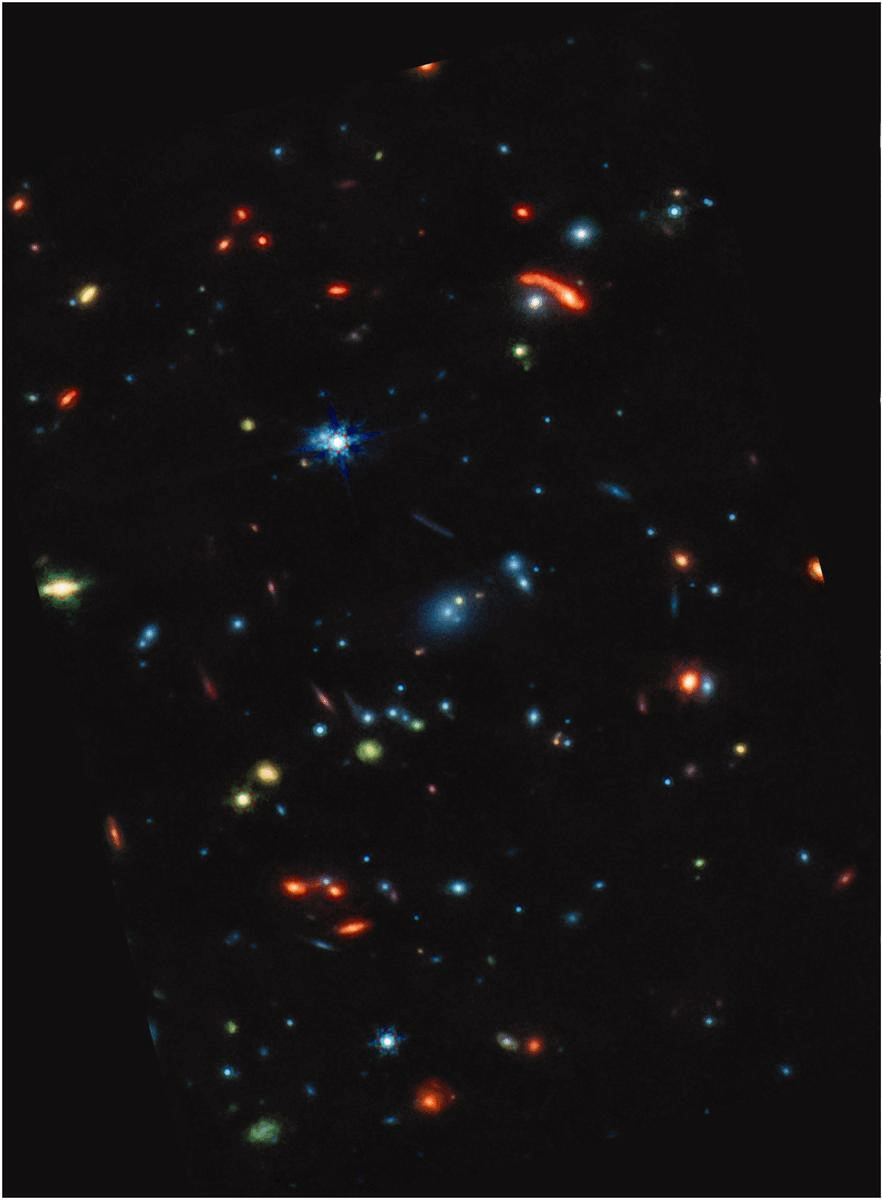
This view shows the difference between the NIRCam and MIRI views of JWST, with the NIRCam view being much sharper and revealing more objects. However, the MIRI view reveals dusty details that no other wavelength can reveal, including the abundance and composition of dust in the interior, which are linked to the potential for star formation and life in a galaxy. In the MIRI view, red = gas-rich; blue = gas-poor (but still present); green = organic molecules, especially polycyclic aromatic hydrocarbons.
They combined high resolution with unprecedented sensitivity to infrared light.
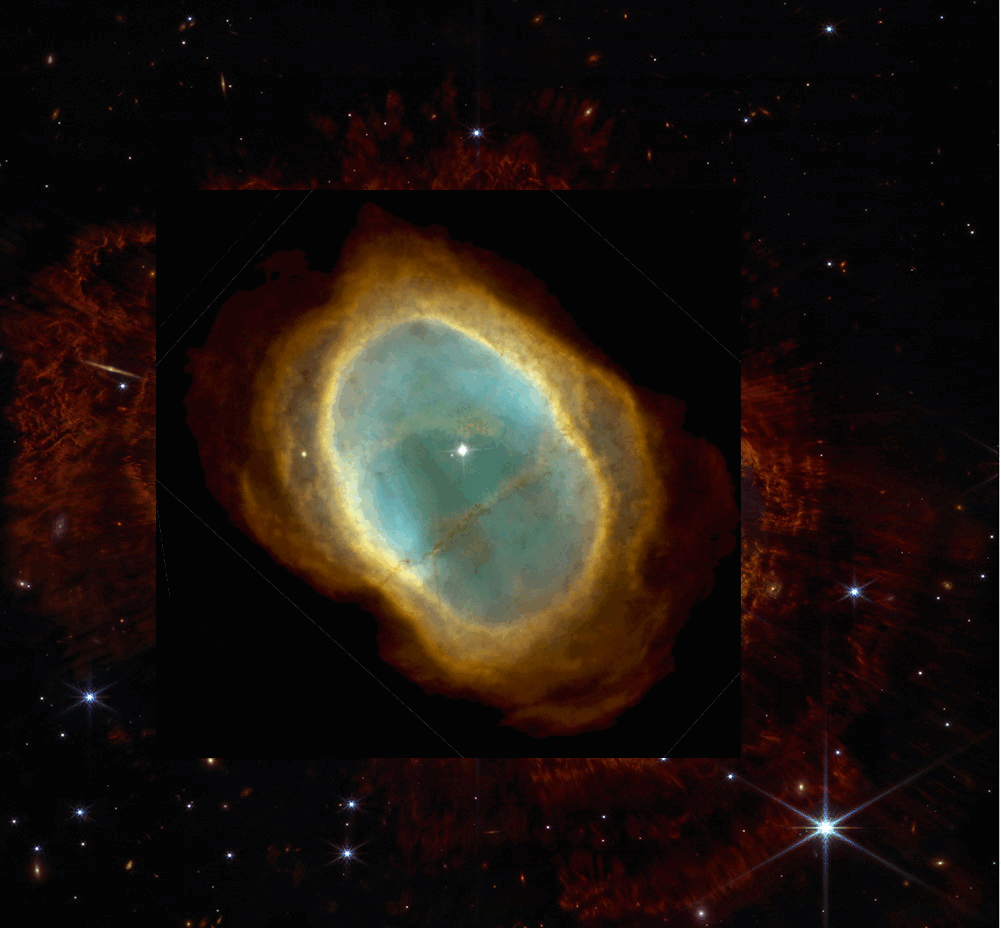
When superimposed on the (older) Hubble data, the JWST NIRCam image of the Southern Ring Nebula is clearly superior in many ways: resolution, details revealed, extent of the outer gas, etc. It is truly a spectacular revelation of how stars like the Sun end their lives, as well as how, ever so slightly, the nebula expanded between the acquisition of the Hubble and JWST images.
There were many surprises in store from the start.
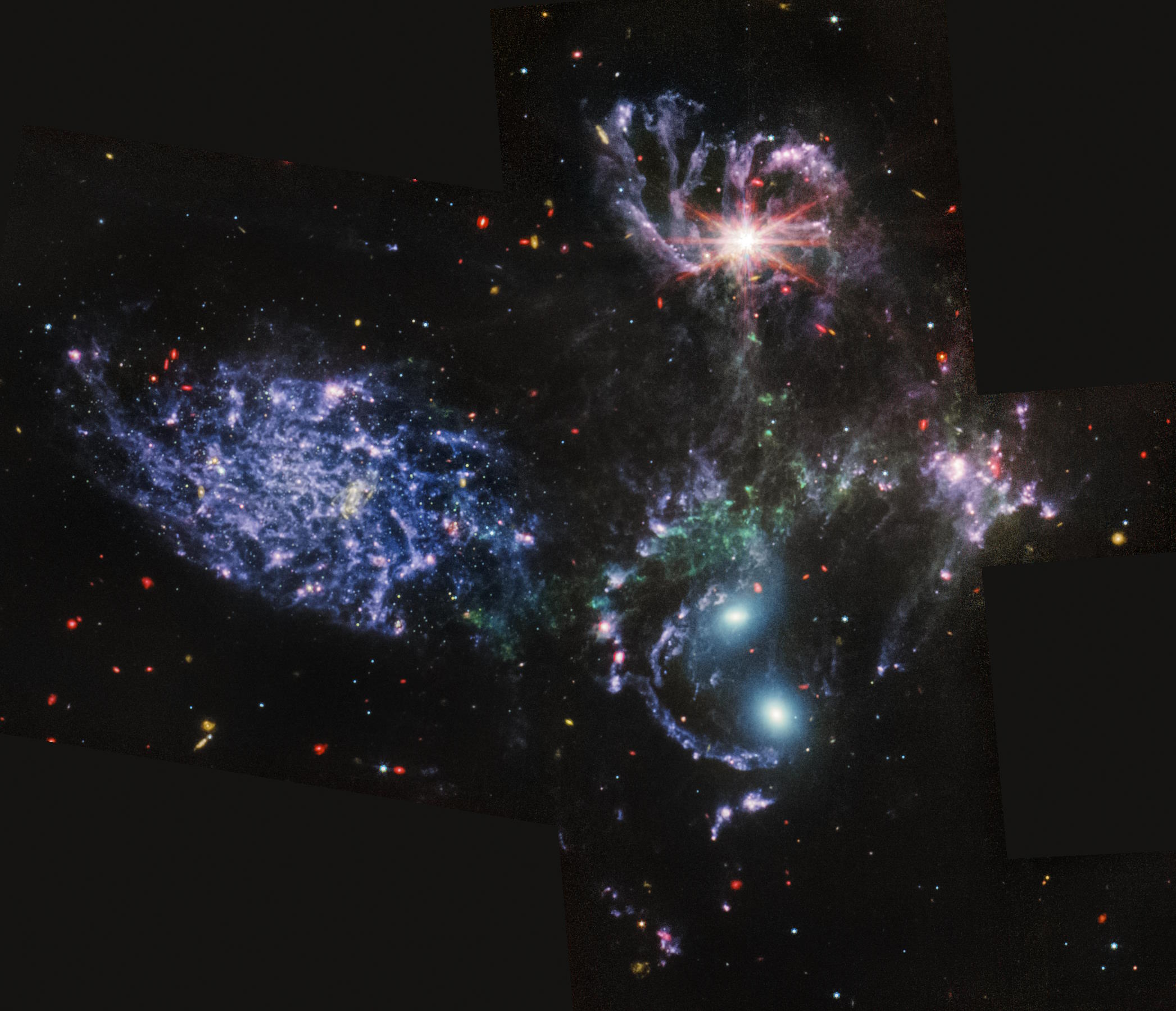
This image is the first mid-infrared image of Stephan’s Quintet ever taken by the James Webb Space Telescope. The galaxy in the upper right of the image shows a bright spike pattern: evidence for a supermassive black hole that has never been revealed before.
New features within planetary systems have been discovered.
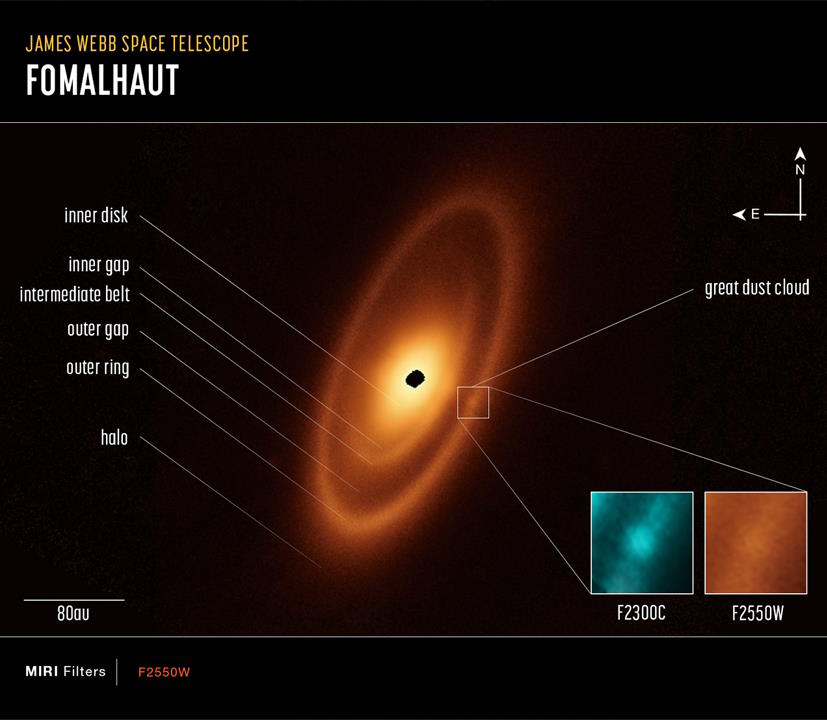
This image of the dusty debris disk surrounding the young star Fomalhaut comes from Webb’s Mid-Infrared Instrument (MIRI). It reveals three nested belts extending up to 23 billion kilometers from the star. The inner belts, which had never been observed before, were revealed by Webb for the first time. The labels on the left indicate the individual features. On the right, a large dust cloud is highlighted and clips show it in two infrared wavelengths: 23 and 25.5 microns.
Distance records have been broken, both for individual galaxies,
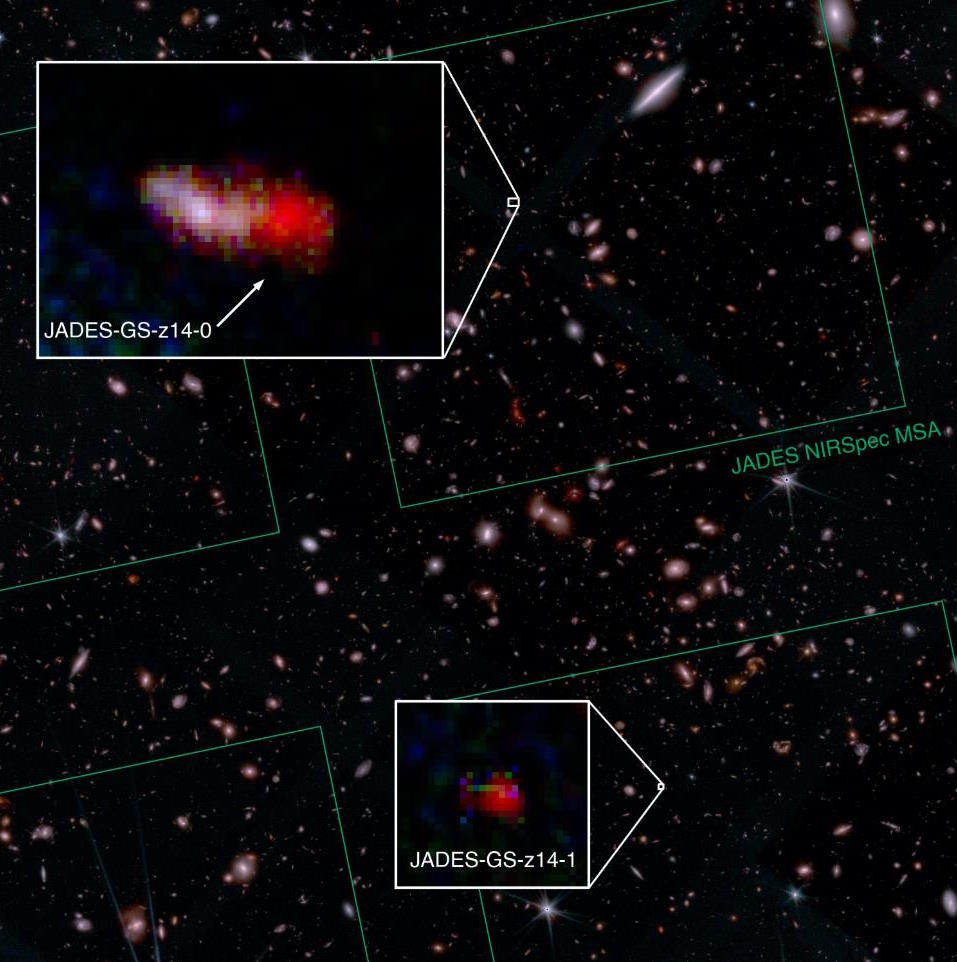
JADES-GS-z14-0, in the upper inset, lies behind (and just to the right of) a closer, brighter, bluer galaxy. Only with the power of incredibly high-resolution spectroscopy, which can separate the two sources, could the nature of this record-breakingly distant object be determined. Its light comes from a time when the universe was only 290 million years old, or just 2.1 percent of its current age.
as well as the first clusters of galaxies.
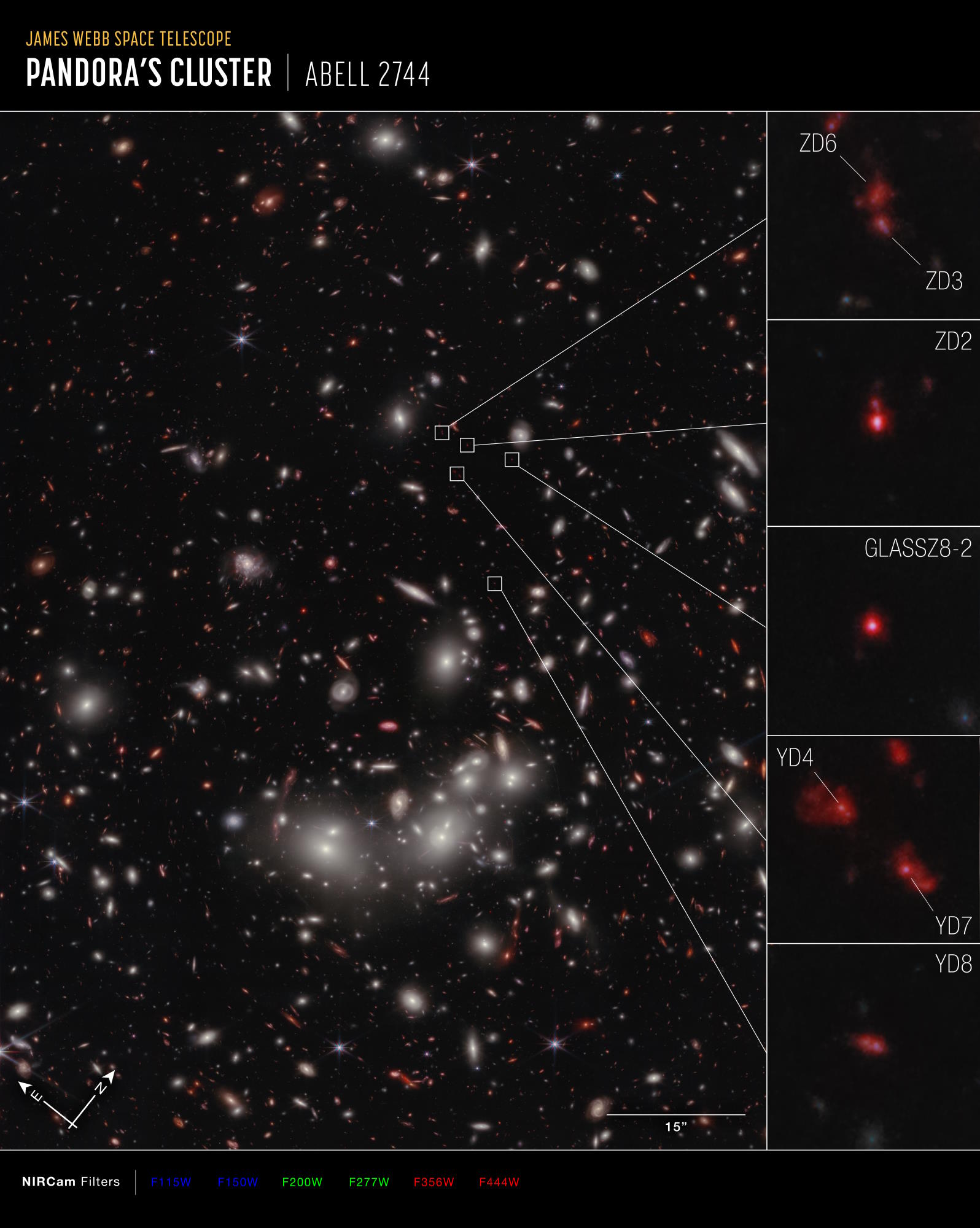
The galaxies that comprise the identified protocluster A2744z7p9OD are shown here, above their position in the JWST view of the galaxy cluster Abell 2744. At just 650 million years after the Big Bang, this is the oldest protocluster of galaxies ever identified. This is early, but it matches simulations of when the first protoclusters should emerge from the initially denser regions.
But spectacular features have also appeared within interacting galaxies.
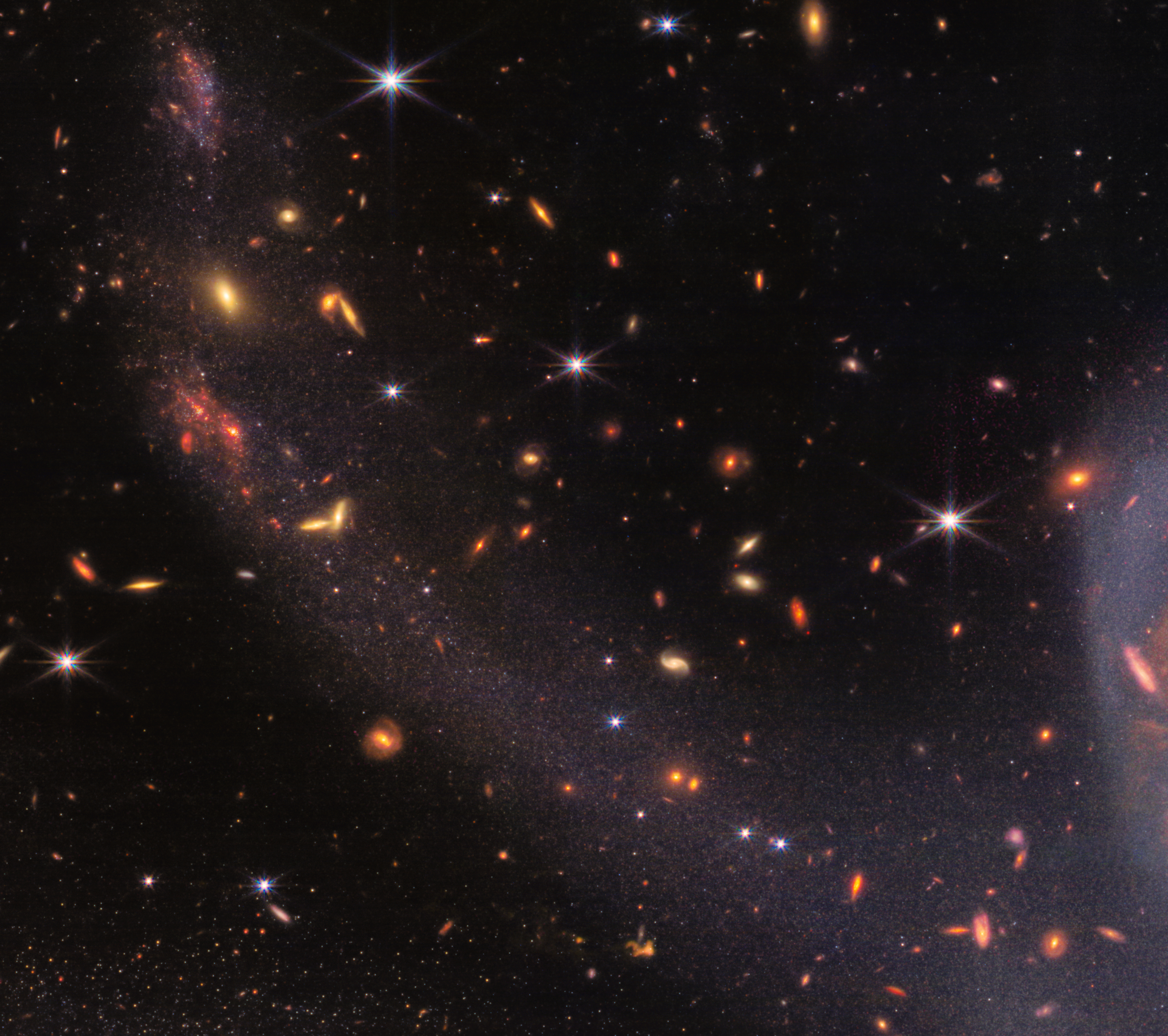
Stellar streams torn from one of the interacting member galaxies of Stephan’s Quintet twinkle in this image, while background galaxies shine from much further away. The new stars that form may not remain gravitationally bound and undisturbed for long, but as long as they persist, they will form groups of stars (or galaxies) that contain no dark matter.
With NIRCam near-infrared and MIRI mid-infrared views, optically invisible features shone brightly.
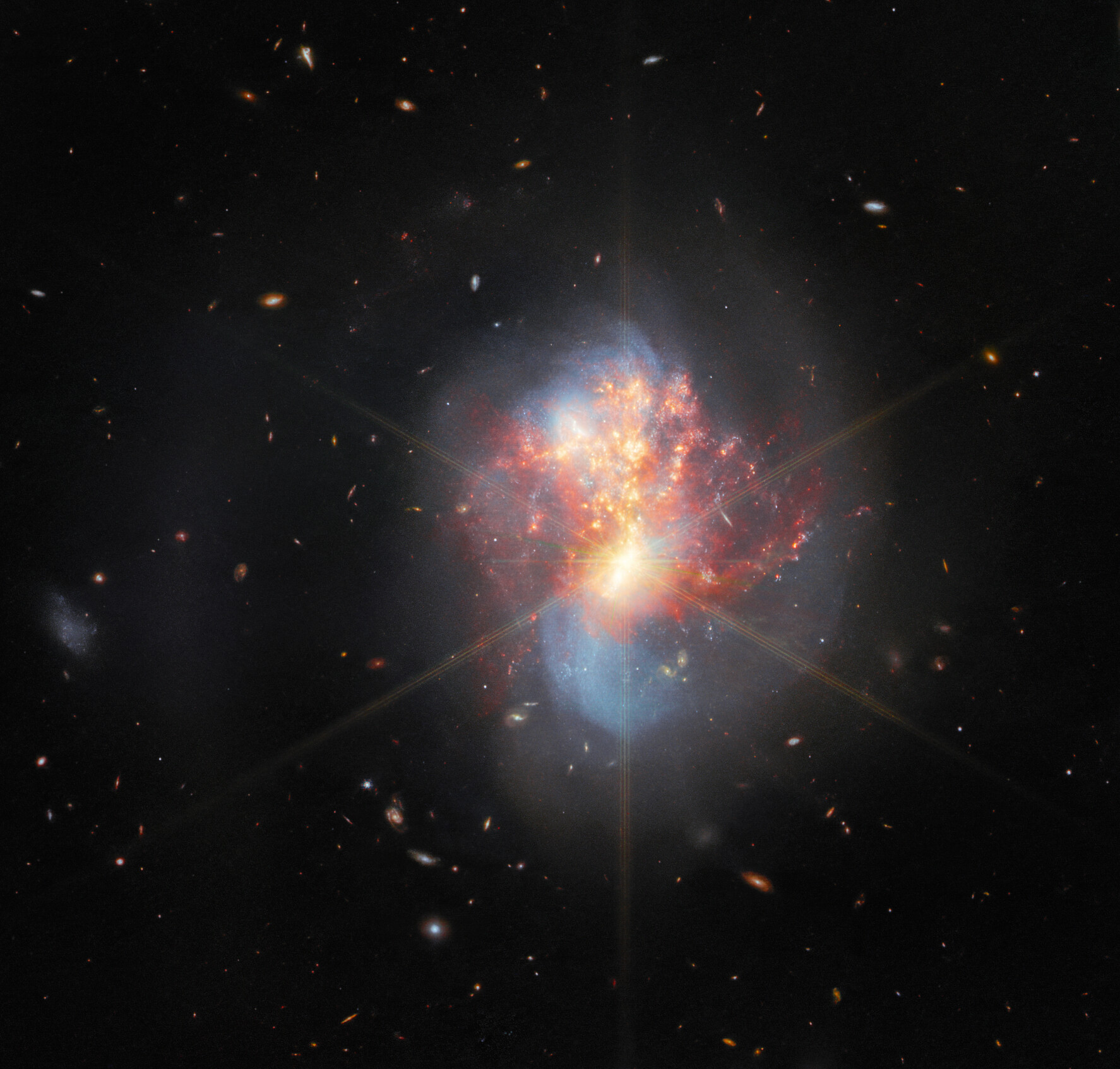
The merging pair of interacting galaxies known as IC 1623 is imaged here by JWST. Data from a trio of JWST instruments, MIRI, NIRSpec, and NIRCam, were used to construct this image. Ongoing star formation at the center produces intense infrared emissions.
Previously, the galactic pair Arp 142 — the Penguin and the Egg — had been observed by Hubble.
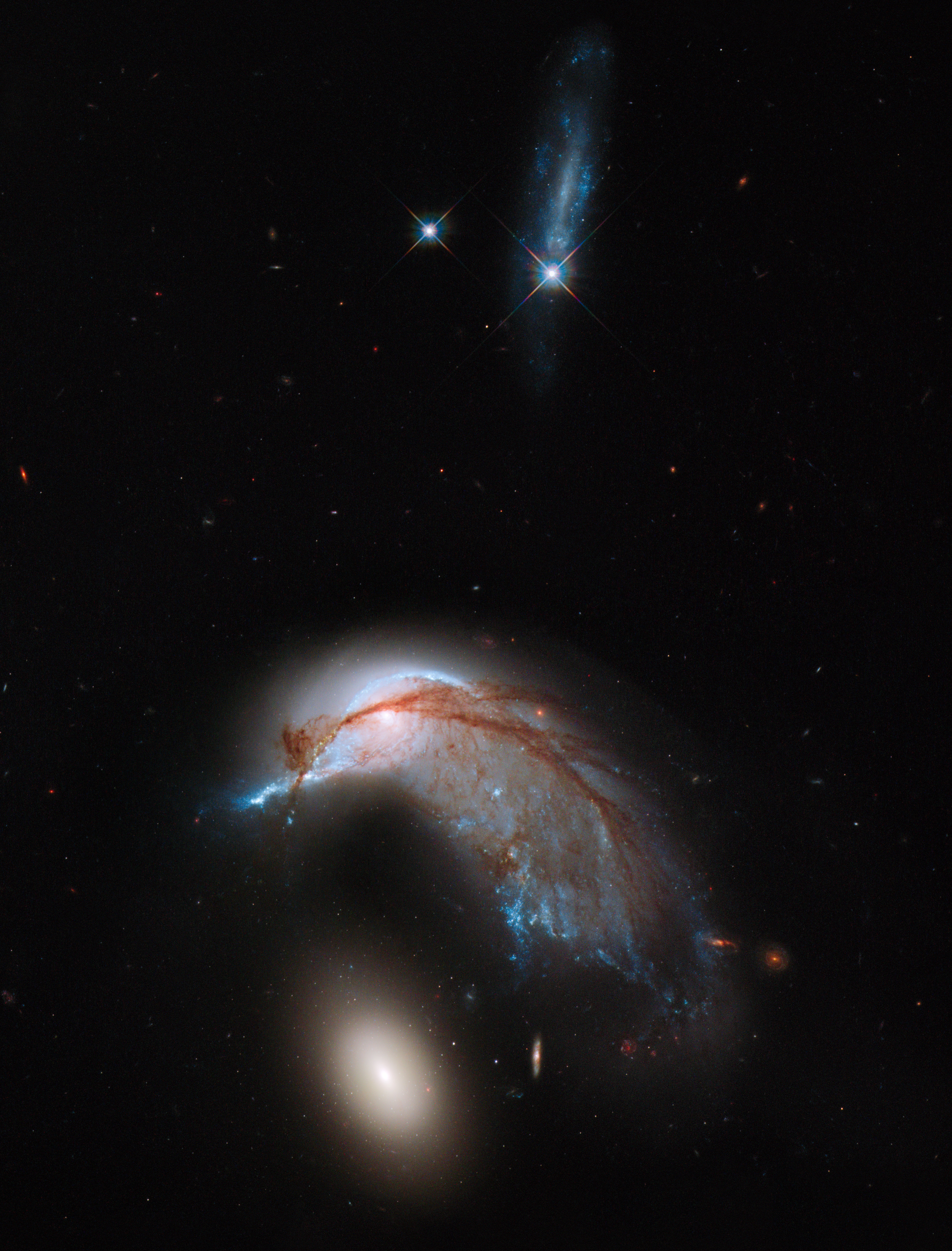
This pair of interacting galaxies, cataloged as Arp 142, was nicknamed “the Penguin and the Egg” after the Hubble Space Telescope revealed this view of the two member galaxies: the extended galaxy NGC 2936 and the compact galaxy NGC 2937.
To celebrate its second anniversary, JWST has released a NIRCam image,
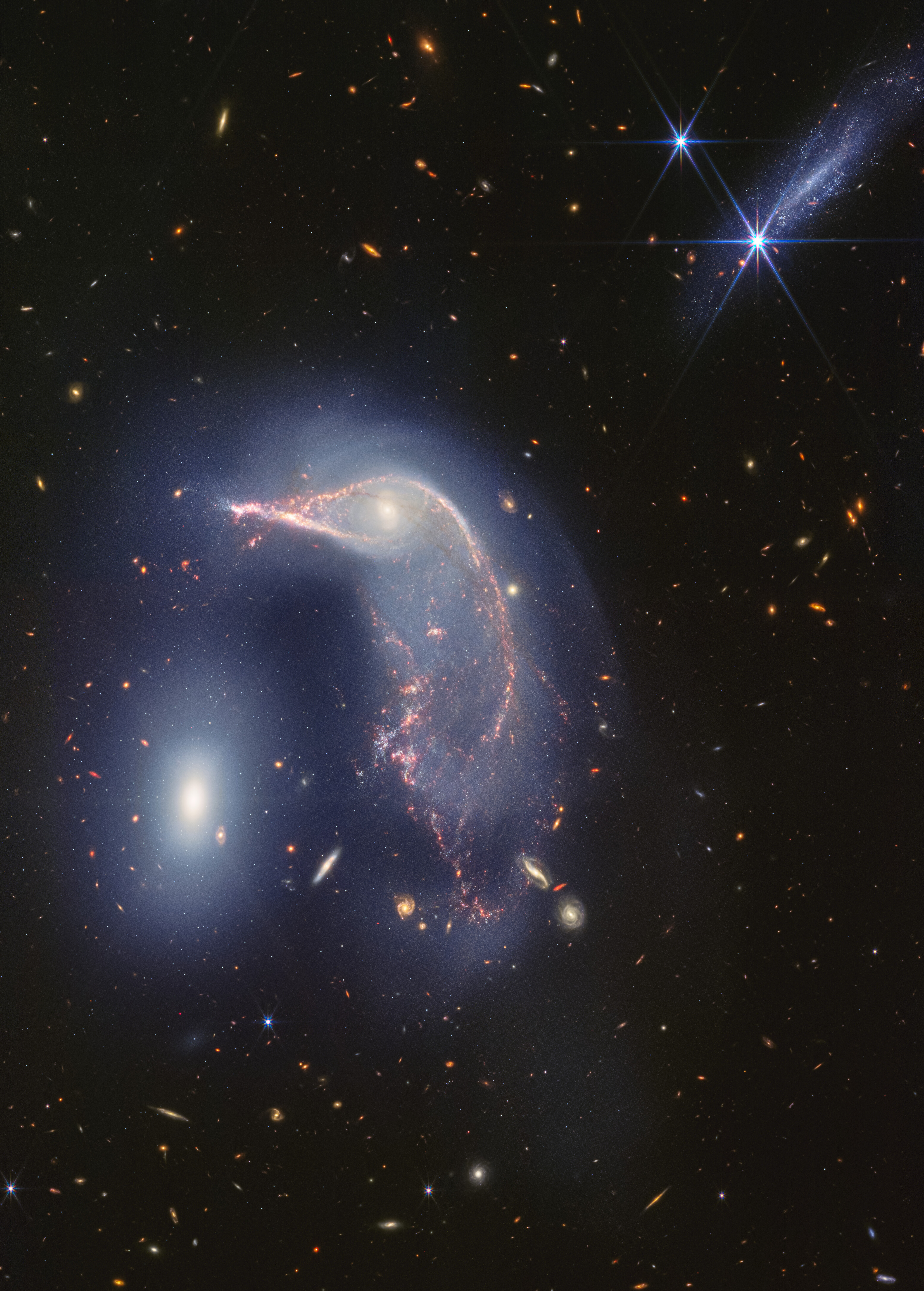
This NIRCam view of the Penguin and the Egg has a smoke-like appearance, while the Penguin’s “eye” shines brightly: it corresponds to the center of what was, until perhaps 75 million years ago, a simple, normal-looking spiral galaxy. The gravitational encounter with the “Egg” galaxy distorted and distended the less massive spiral galaxy into the shape now seen here.
a MIRI image,
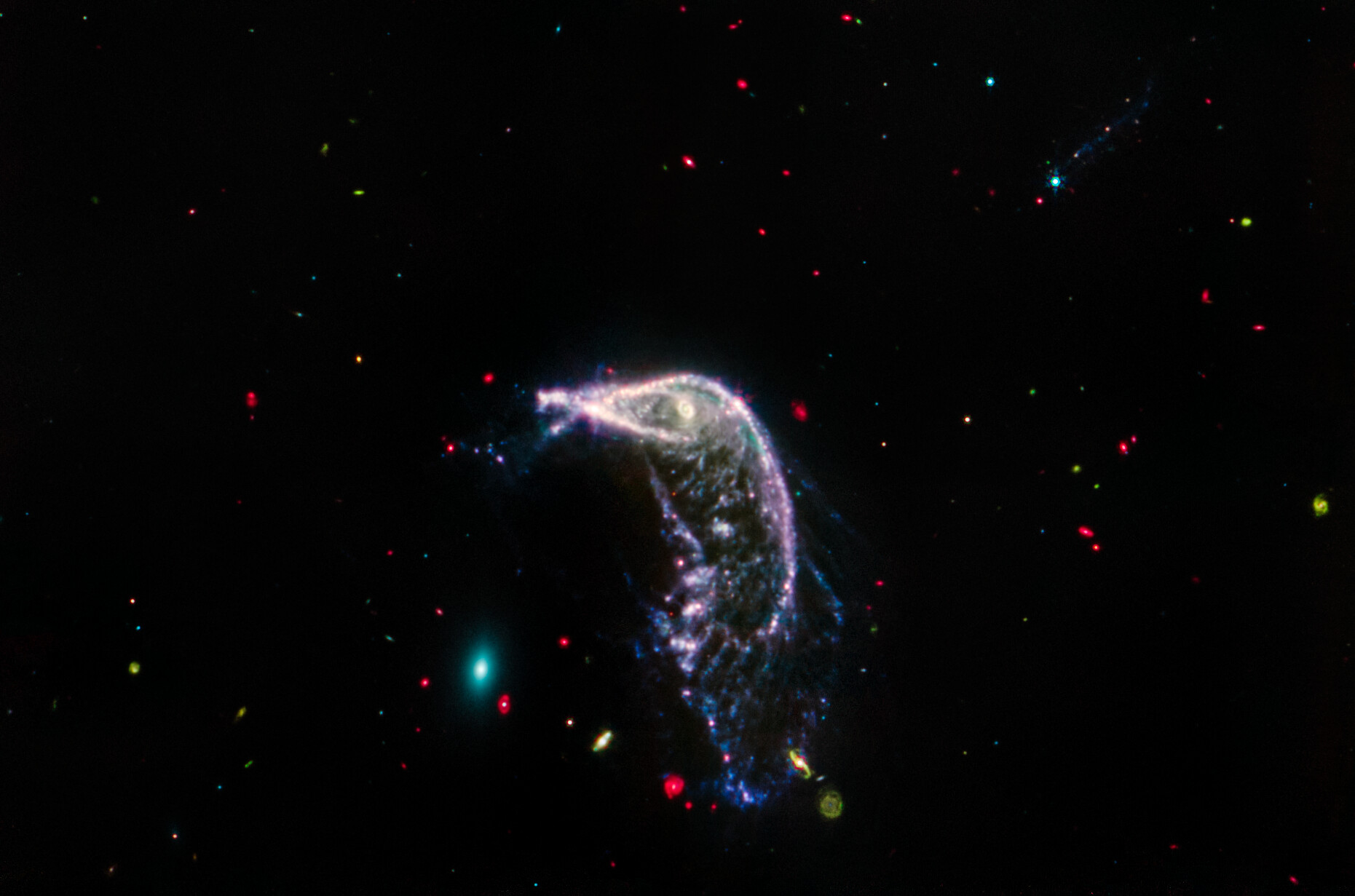
In the mid-infrared, the Penguin looks more like a seahorse, with cool dust dominating the galaxy’s appearance, while the Egg appears smaller and more compact: it is largely illuminated by the cooler, older stars within it. At much longer wavelengths than the NIRCam image, MIRI’s resolution is much lower, but still reveals spectacularly sharp features.
and also a composite image of this galactic encounter, occurring 326 million light-years away.
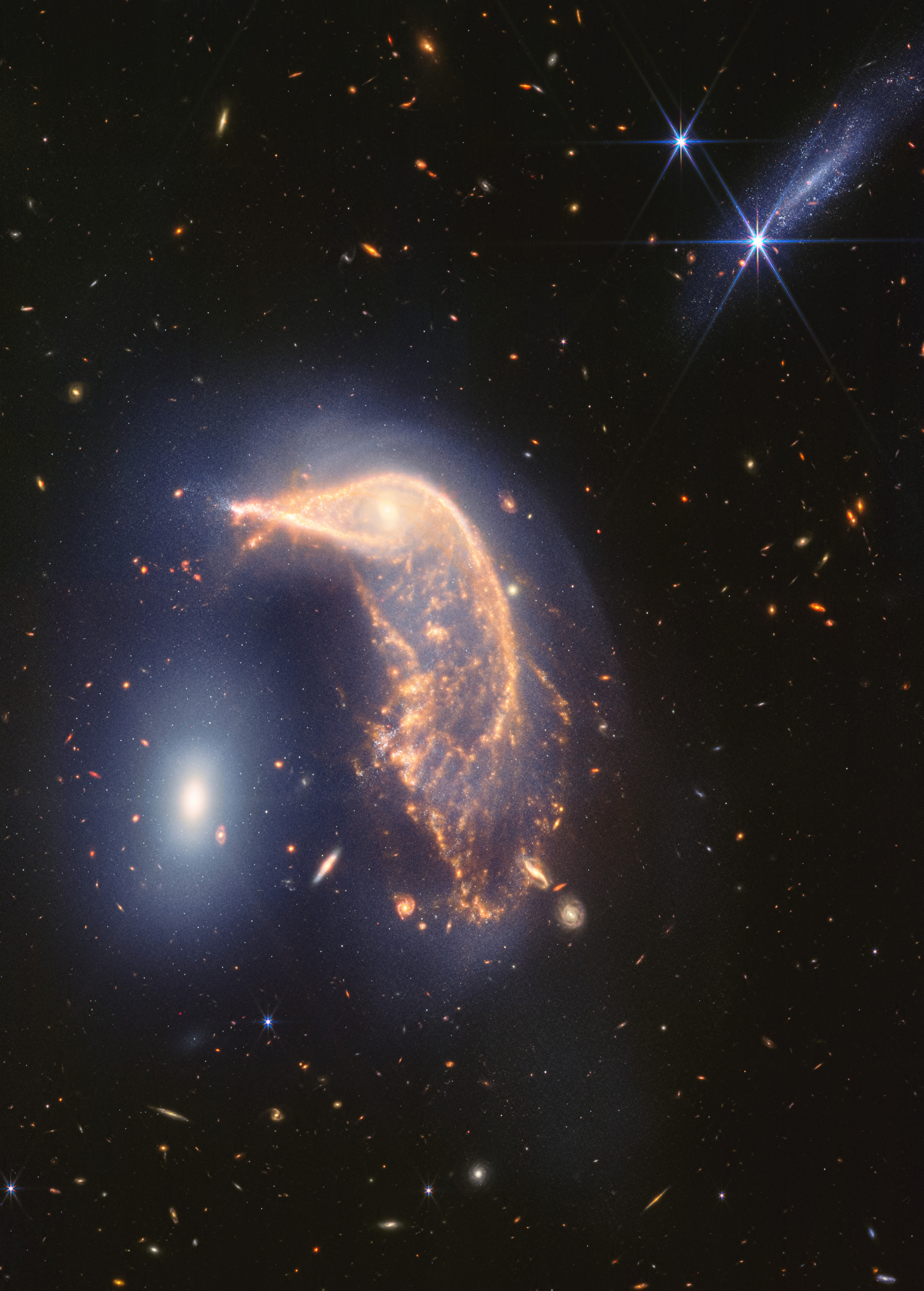
In this composite image, NIRCam and MIRI data are combined to produce this image, which is richer in detail than either NIRCam or MIRI images taken separately. Although MIRI and NIRCam features are clearly present throughout the Penguin, only the central core of the egg shows a MIRI contribution.
The largest galaxy, the Penguin, has extremely extensive features: knotted gas, which triggers new episodes of star formation.
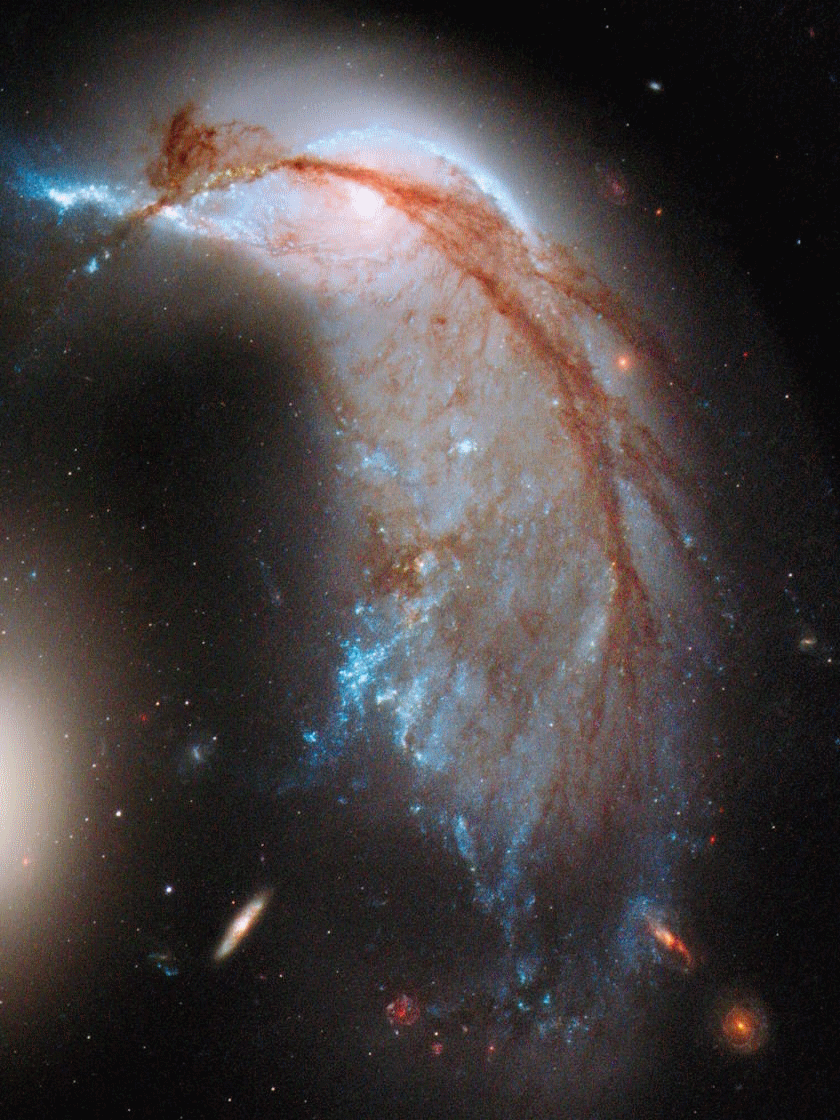
This three-panel animation shows Hubble (visible light), NIRCam (near-infrared light), and NIRCam+MIRI composite (all in JWST light) images superimposed on each other, highlighting the different features present in the Penguin component of Arp 142.
The Egg, on the other hand, is relatively undisturbed: it is a more massive and compact elliptical galaxy, with very little remaining gas.
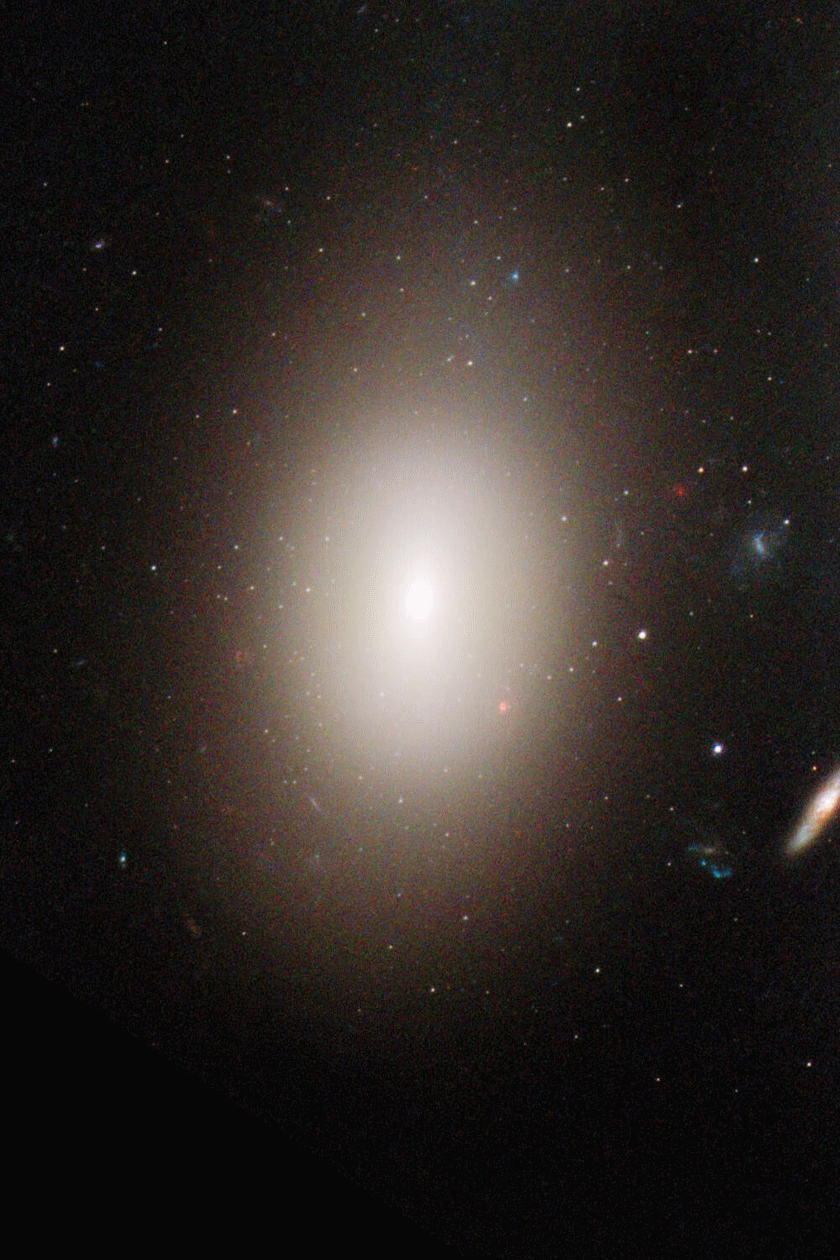
This three-panel animation shows images from Hubble (visible light), NIRCam (near-infrared light), and composite images from NIRCam+MIRI (all in JWST light) superimposed on each other, highlighting the different features present in the Egg component of Arp 142. Note how only the background galaxies and the absolute center of the Egg are impacted by the MIRI imagery.
Nearby, edge-on galaxy PGC 1237172 lies 100 million light-years closer: dust-poor and nearly invisible to MIRI.
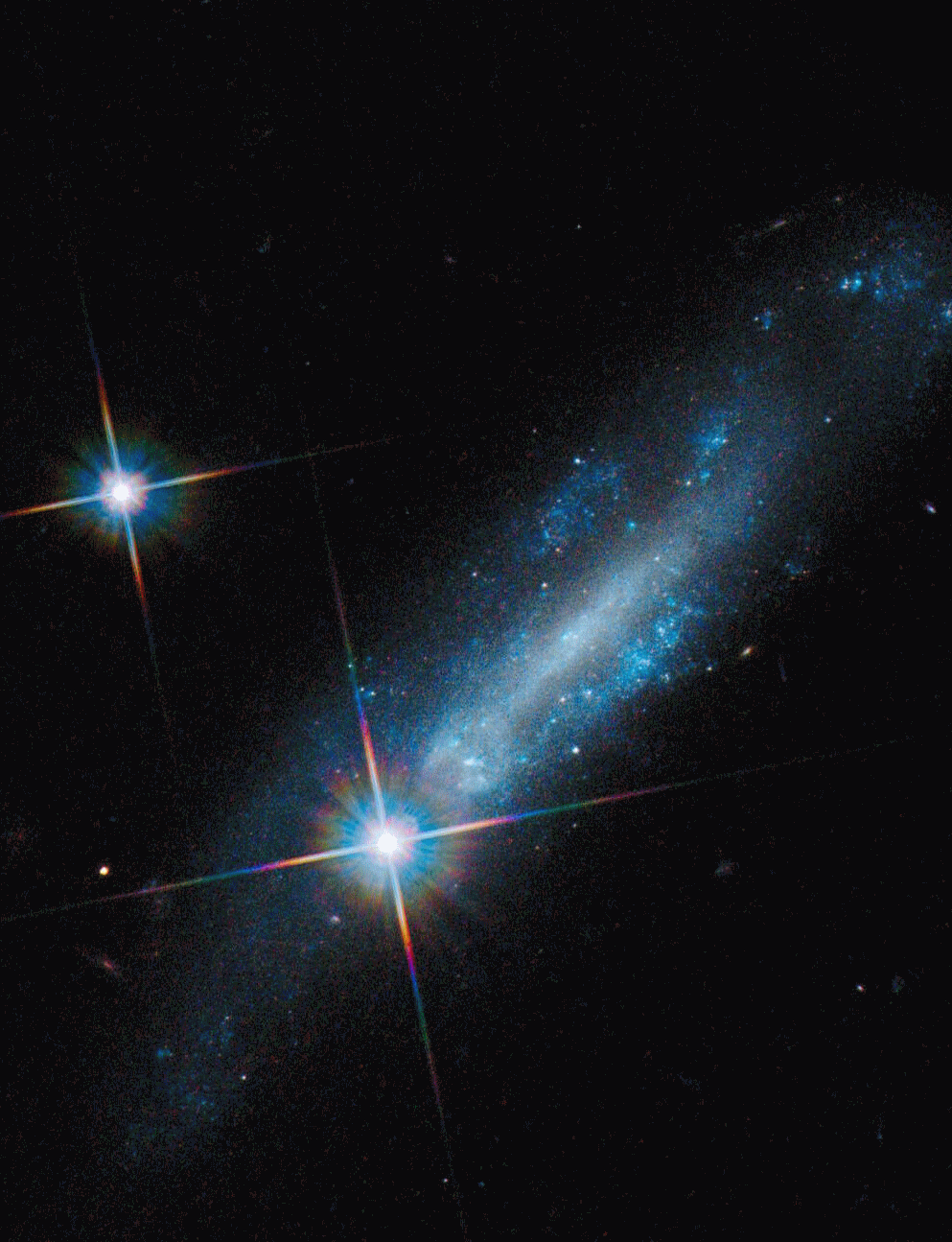
This three-panel animation shows images from Hubble (visible light), NIRCam (near-infrared light), and composite images from NIRCam+MIRI (all in JWST light) superimposed on each other, highlighting the different features present in the galaxy PGC 1237172 as seen from the edge. The galaxy itself is nearly invisible to MIRI.
The penguin, once a spiral, stretches to resemble a seahorse under infrared light.
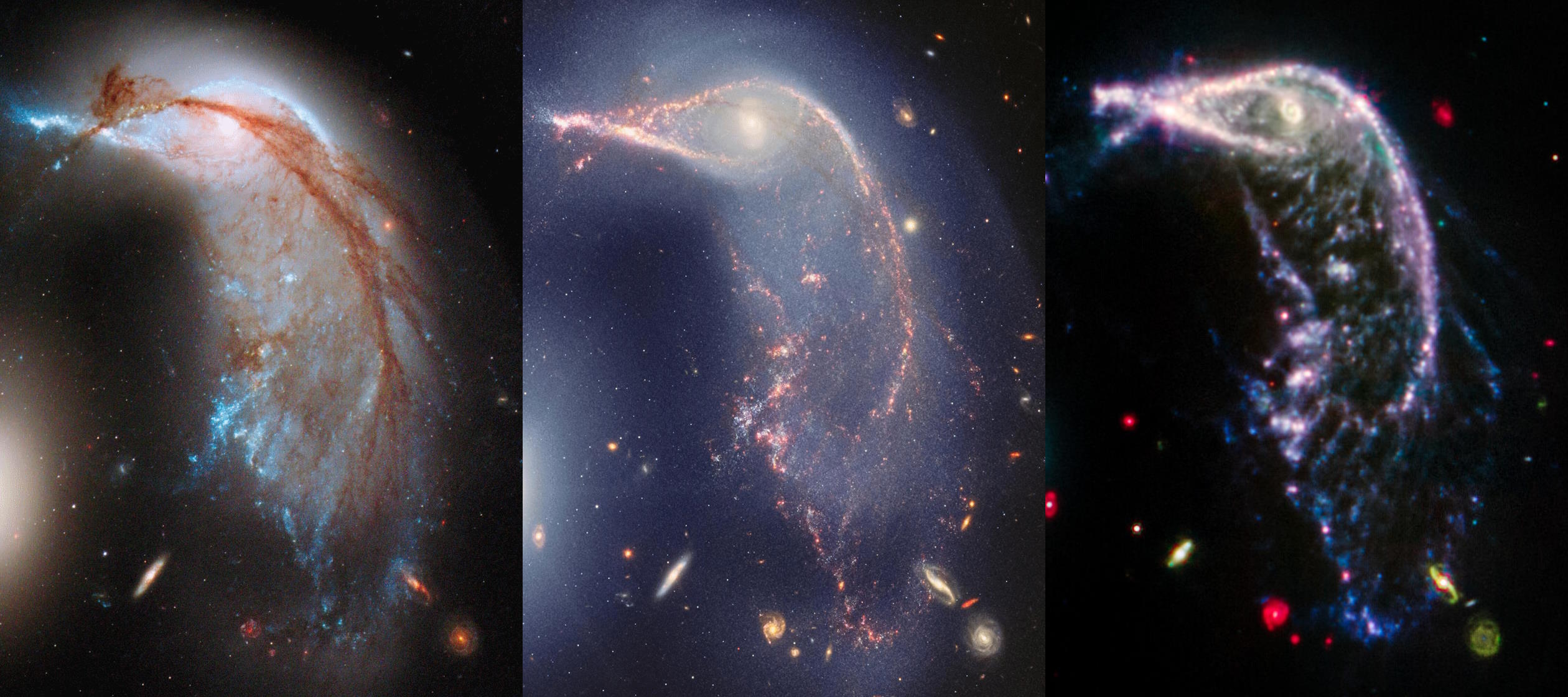
These three views show visible-light (left), near-infrared (middle), and mid-infrared (right) views of the Penguin galaxy in Arp 142. The galaxy takes on a seahorse-like appearance in mid-infrared light, while polycyclic aromatic hydrocarbons, cool old stars, and cold dust are highlighted.
The smoke-like appearance reveals polycyclic aromatic hydrocarbons: complex organic molecules that could be the precursors of life.
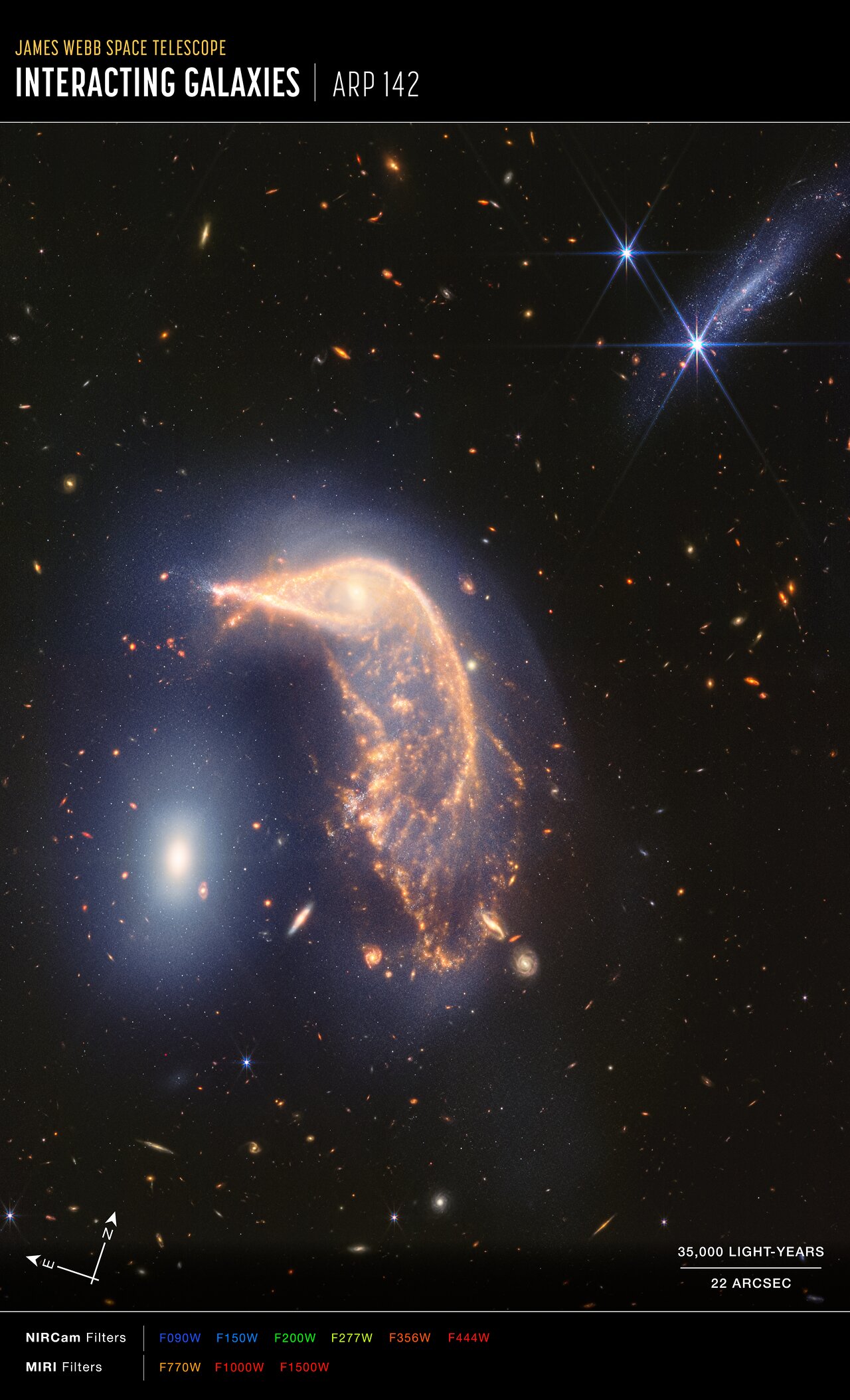
This annotated composite view from JWST shows the NIRCam and MIRI data together, highlighting longer wavelength features in redder colors and shorter wavelength features in bluer colors. The Penguin, in particular, has a great diversity of gaseous and stellar features, showing how severely it is perturbed by this gravitational encounter.
Eventually, and ironically, the egg would eventually supplant the penguin.
Mostly Mute Monday tells an astronomical story in pictures, visuals and 200 words or less.